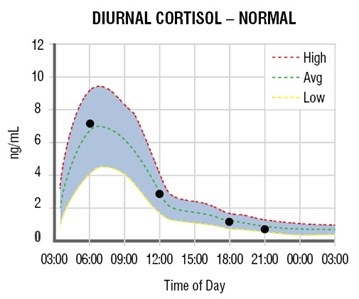September feels different this year, doesn’t it? Maybe that’s a silly question, because everything feels different this year. We are living in unprecedented times, with so much unknown. For me, September usually brings a celebration of new beginnings – a new school year, fresh crisp air, and an opportunity to reset and make changes in my routine or my environment. While all of that still applies to September 2020, there is a thread of uncertainty that is woven into the pumpkin spice lattes and changing leaves. What will happen with the virus as our kids go back to school? Are we facing a second wave of infections? How long will we be restricted in carrying out our activities and seeing our loved ones? Such questions will remain unanswered for now, and we need to have the courage and optimism to face the unknown for the next several weeks, and months.
With uncertainty comes a certain amount of stress. This means rising levels of cortisol – our chief stress hormone. Most of us are intimately familiar with cortisol, whether we know it or not. Cortisol levels jump around throughout the day in response to our day-to-day stressors. And while cortisol gets a reputation for being destructive, it actually plays an important role in the body. We don’t want to eliminate it completely, yet we don’t want our stress response to run amok. It’s important that we learn to find balance in our cortisol production and respect this hormone for its power to both protect and destroy. So let’s get to know cortisol a little bit so you can enter this fall feeling less “ohhhh nooo!” and more “ommmmmm”.
Five Fast Facts About Cortisol
- Cortisol is released by the adrenal glands, two little pyramid-shaped organs perched above our kidneys. The adrenal glands are responsible for producing other hormones, too, like epinephrine, norepinephrine, DHEA, and aldosterone.
- Cortisol is released in a very specific diurnal (meaning throughout the day) pattern. It spikes first thing in the morning in an effort to wake us up and get us going, and then it slowly slopes down over the course of the day and finally bottoms out in the evenings to help us to relax into sleep (which is why high evening cortisol levels can be involved in insomnia). Here’s a nice graphic that shows a normal cortisol pattern.

- In the right amounts, cortisol helps to temporarily increase our blood pressure, sharpen our focus, increase our blood sugar, and crank up our immune response – all super important if we are running from a predator and are at risk of an injury. But this “fight or flight” response was designed to be short-lived, meaning that after several minutes our cortisol drops back to normal and our body’s response to the acute stressor calms back down to baseline.
- In our busy and stressful modern world, many of us have a prolonged “fight or flight” response that lasts for hours, or even all day. Without the proper interventions to keep our cortisol in check, this can lead to blood sugar issues, hypertension, anxiety, weight gain (especially around the middle), insomnia, gastrointestinal problems, and more.
- Too little cortisol is also a problem. This can sometimes occur after living for years with too much cortisol being produced. Over time, our brains realize that the adrenals need to take a break, so they silence their command to the adrenals to make cortisol. The result is low cortisol levels and a difficulty in mounting a normal stress response. Symptoms can include chronic fatigue, anxiety and/or depression, poor immune function, low blood sugar, and a general sense of burnout. This is sometimes referred to as “adrenal fatigue” but a more appropriate term is hypothalamus-pituitary-adrenal (HPA) axis dysfunction.
How to Support Healthy Cortisol Levels
There are many lifestyle modifications that can lead to an improved cortisol response. Most are free, accessible, and only take a few minutes.
Here are my top 10 cortisol balancing activities that you can start now:
- Breathe. Take time throughout the day to take a breathing break. Take slow, deep belly breaths for as long as it takes to feel a sense of calm wash over you. An easy breathing activity is called the 4-7-8 technique: breathe in for a count of four, hold for a count of seven, then breathe out for a count of eight. Repeat this at least five times.
- Mind your caffeine. We all love a good cup of joe first thing in the morning (myself included!) but since caffeine is a natural cortisol raiser, drinking it later in the day may increase cortisol at a time when it should be naturally declining. If you find yourself relying on caffeine to get through the day, it may be a sign that your cortisol levels are too low as it is often used as a crutch to compensate for energy dips related to HPA axis dysfunction.
- Exercise wisely. We all know that exercise is key to a healthy body. Like caffeine, exercise is a natural way to increase cortisol levels. So be mindful of this if you are an evening exerciser and are struggling with sleep or relaxation before bed. Try exercising in the morning when your body is used to higher cortisol. This also leaves the body with plenty of time to bring cortisol levels back down to resting levels.
- Go out and play. Laughter, fun, and play can all bring down cortisol. Run around outside with your dog, take a play break from your work to do something silly with your kids, or work on a relaxing activity at home (puzzle, anyone?). Oh, and don’t forget about sex! While libido may drop in the setting of acute or chronic stress, orgasms tend to decrease cortisol levels.
- Meditate. Meditation is one of the most powerful tools we have for combatting stress. Find a good guided meditation app and commit to even five minutes per day. Prayer, yoga, and pilates have similar meditative qualities and can be game changers, even if you don’t have adrenal issues! So get your ommmm on, stat!
- Consider having your cortisol tested. A 4-point salivary cortisol test (like the image above) can help to determine what your cortisol levels look like so that you can plan interventions accordingly, alongside a practitioner who is well-versed in integrative medicine. These test kits are affordable and can be done at home without having to enter a lab.
- Keep your blood sugar steady. Remember when I said that cortisol can raise blood sugar? Well, skipping meals or eating lots of sugar (which can lead to a blood sugar crash) triggers the adrenals to release cortisol in an effort to bring glucose levels back to normal. So avoid sugar and carb binges, and don’t skip meals unless you are a well-adapted intermittent faster.
- Sleep! Prioritize your sleep. This should probably be #1 on this list. Most of us need at least seven hours of good quality sleep every single night. Lack of sleep can keep cortisol high during the day in an effort to keep us aroused and awake. Sleep apnea can cause cortisol spikes throughout the night, so if you think you might have sleep apnea (snoring can be a clue, or waking up gasping for air), talk to your practitioner about getting a sleep study. (“Why We Sleep” by Matthew Walker is a must-read if you are interested in learning more about sleep)
- Like any organ, the adrenals need to be nourished in order to function well. The adrenal glands love vitamin C, vitamin D, vitamin E, magnesium, selenium, iodine, and zinc. A well-rounded diet full of lots of vegetables will get you most of what you need, but a good quality multivitamin may also be useful for some.
- Adaptogens are a family of herbs that have been used for generations to help the adrenal glands respond optimally to stress. Some examples are ashwagandha, holy basil, eleuthero, rhodiola, Siberian ginseng, and maca. Some medicinal mushrooms also have adaptogens properties, like cordyceps and reishi. Work with a practitioner who is familiar with these herbs and ‘shrooms to help you find a combo that might be right for you.
May your September be full of light, hope, sleep, breath, and a nice stable cortisol response!
P.S. If you are interested in reading more about the stress response and how it affects our bodies, a great book is “Why Zebras Don’t Get Ulcers” by Robert Sapolskly.




Comments 1
Mandi; I was not able to get in the website to purchase the Cortisol Manager. I input all of the required information, but the page didn’t load. Maybe someone can help me with this and answering some questions I have about it’s interaction, if any, with the supplements I already take. Thanks!